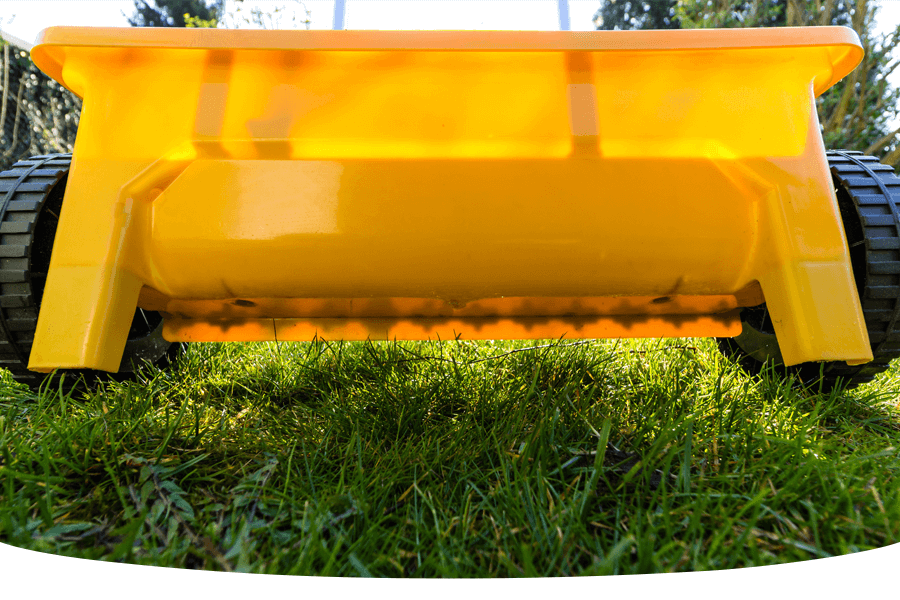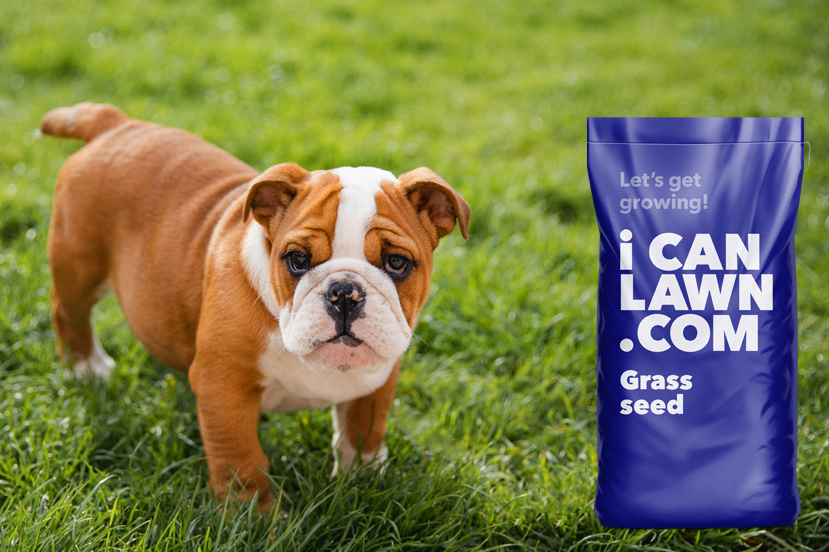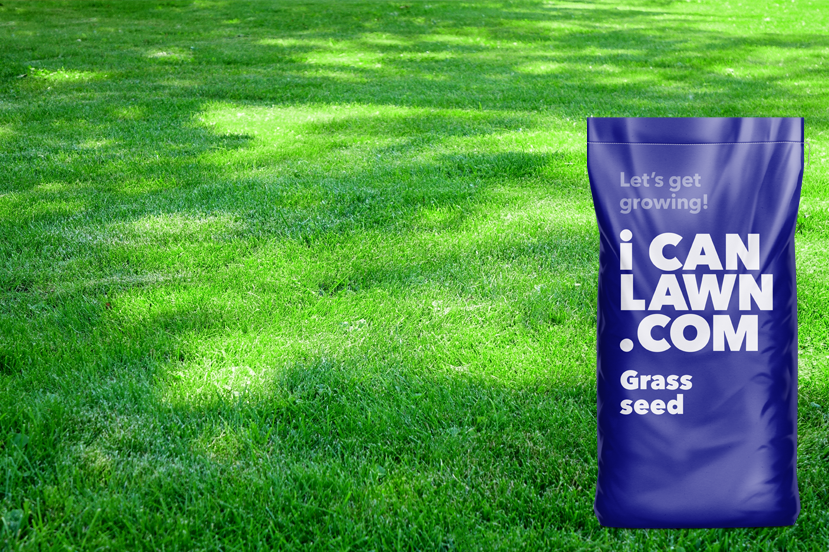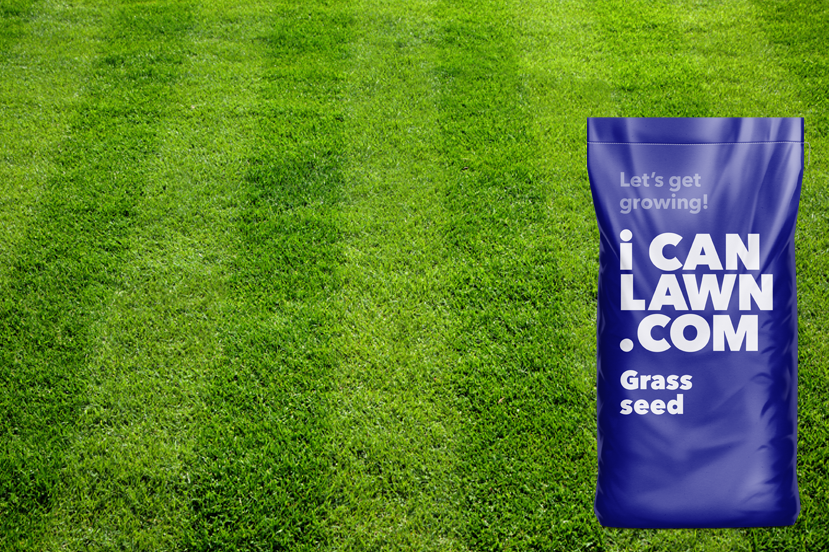When to sow grass seed: the ultimate sowing guide
Knowing when to sow grass seed is the best way to give your lawn the best start to growth! And after a cold, wet and windy winter, it’s time to dust off your gardening tools and head back out to our much-loved lawns. Or if you were not able to start your new lawn in spring, you will be pleased to know that summer and autumn are also good times to sow grass seed!
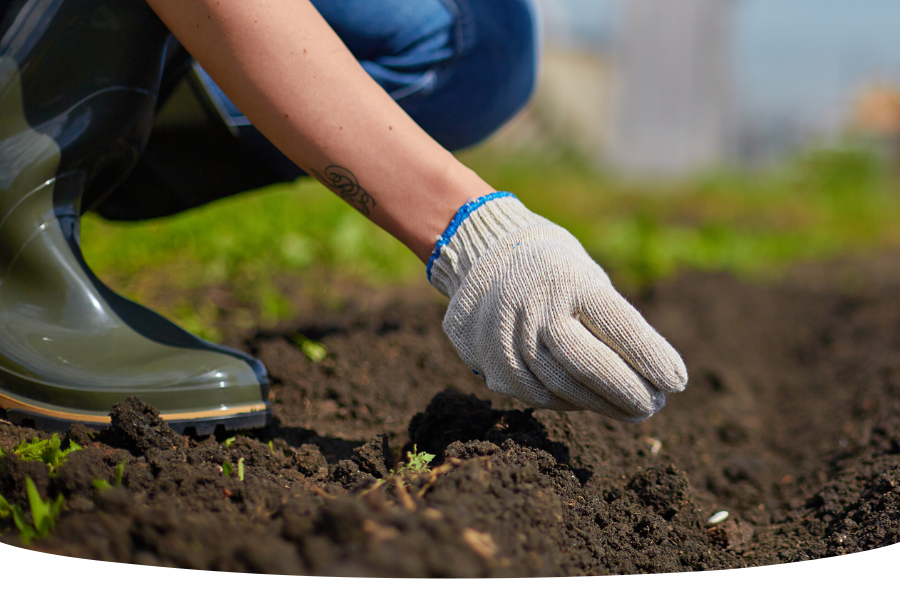
Spring, summer and autumn are great times of year to sow a lawn, whether you're planting a new lawn from scratch or overseeding an existing one. When to sow grass seed comes down to the time of year, preparation and ensuring you have the perfect weather conditions for the seedlings to germinate and grow!
So, whether you have recently moved into a new home, planning a lawn make-over, or maybe you want to start over and sow a new lawn from scratch, keep reading and follow our steps on when to sow grass seed to help you achieve the lawn of your dreams!
Knowing exactly when to sow grass seed
Spring sowing
The weather in the UK during spring creates a perfect environment for little seedlings to grow. Temperatures will increase, the sun's rays will appear more often, and not forgetting the ever-reliable rain showers that we normally experience in spring, too. These three combined will work well at helping new seedlings develop and grow.
Sowing grass seed in summer
Sowing grass seed during the summer requires a bit more effort, but your lawn will grow quickly if you keep the soil damp and avoid sowing during extremely hot weather. The higher temperatures demand extra care for your seedlings, but all the extra sunlight encourages rapid growth once the grass begins to sprout from the ground! We have a guide on how to sow grass seed that will take you through the easy task of planting grass seed!
Autumn grass seed sowing
When it comes to the ideal time for planting grass seed, autumn is many gardeners' favourite! As summer comes to a close and temperatures begin to normalise, early autumn emerges as one of the best times to get your grass seed growing in the UK.
So, let’s get going…or should we say sowing?
Starting from scratch
If you plan to sow a brand-new lawn, you have come to the right place. Starting with a blank canvas in your garden means you can get your lawn right from the very start.
Making the right selection
Before you begin any work on your lawn, take time to make sure you get the best grass seed for your garden. Having a seed that is fit for purpose is half the battle, and if you choose correctly, the results will be everything you had hoped for and more! At iCANLAWN.com, we have a range of 5 different lawn seed mixes, all with different purposes.
- For a resilient lawn that will bounce back even after all the ‘ruff’ and tumble from your pets, try our Tough Stuff Lush Lawn.
- For a family-friendly lawn that will withstand many a football match and fantasy tea party, then try our Fast Grow Family Lawn.
- If you have recently moved into a new build home, you might find that you have clay soil, so we recommend our New Build Dream Lawn mix.
- For a lawn that lives under shade, you should opt for our Shade Supreme Lawn.
- And if you’re looking for a lawn that will stop your guests in their tracks, our Super Fine Luxury Lawn will do just that!
Still not sure what lawn seed to go for? Head over to our guide on how to choose a lawn seed.
Putting in the groundwork
No pun intended…Preparing your seedbed is really an important stage of sowing a new lawn. Before you start sowing, take time to really get your seedbed ready for those now seedlings.
You should make sure that your seedbed is free of weeds and that it is well-fed. You can use our 3 IN 1 Lawn Rescue to tackle weeds and moss, and our Pre-Seed First Feed is a great way to enrich your soil with nutrients in preparation for your newly planted grass seed.
Then, you will need to create a level seedbed to make sure that no lumps, bumps or clumps appear across your soil. This might sound like a long process, but it will be worth it when you see your lovely lawn flourishing!
For a more in-depth process on how to do this, follow our guide on how to sow a new lawn, where we go through each step of seedbed preparation.
Now it’s time for the all-important sowing!
Sow, sow, sow your seed!
For new lawns, we recommend a spreading rate of 50g per square metre. If you’re unsure about how much seed you need to cover your lawn, use our product calculator to find out.
Depending on the size of your lawn, you can do this by hand or using a spreader. Take time to measure out your area correctly and use the right amount of seeds for the best results. After, we recommend that you rake it all in, firm it down and give it a good watering to make sure it grows.
Getting your old lawn back
Overseeding is one of the best tricks in the books to bring your lawn back to life. It can help get your lawn back to its best and can be carried out in spring. New seeds will fill out bare patches and bulk up thinning spots to produce a luscious lawn once again!
Still not convinced? Read our guide on why you should overseed your lawn, and we can guarantee that you will be reaching for your lawn seed…
Now let’s get started on how to overseed your lawn.
Say goodbye to the weeds!
This process is the same as when you are sowing a new lawn. The aim is to remove all weeds, debris and moss from your lawn surface. This makes sure that any new seed going down will be able to grow freely without being taken over or obstructed by weeds. You can use our 3 IN 1 Lawn Rescue, or if weeds are not an issue, then you can use our Pre-Seed First Feed to give your grass the best possible start at growth!
Mow before you sow
Make sure to give your lawn a quick mow over before going any further because you won’t be able to mow it for a while after sowing new seed. At this stage, you can also rake your lawn and remove any dead grass that has built up. You might be left with an uneven lawn surface after this step; if so, you can add some topsoil to level your lawn.
Sow away the patches!
For overseeding, we recommend using a rate of 35g per m2. Just like sowing a new lawn, you should measure out your space and take care when scattering the seed. Raking and watering the seed is also an important step here and should be done to make sure your grass develops.
Follow our how-to guide on how to overseed your lawn, for a full breakdown of each step involved.
Now you know when to sow grass seed
One thing to add is that we recommend you stay off the lawn for at least weeks after sowing the seed. This will give your grass time to grow and develop uninterrupted. It's best to not use your lawn at all (if possible) until after your first mow when the grass grows to 50-70mm.
We've included a few more helpful guides below to ensure your lawn is as good as it can be this year!




